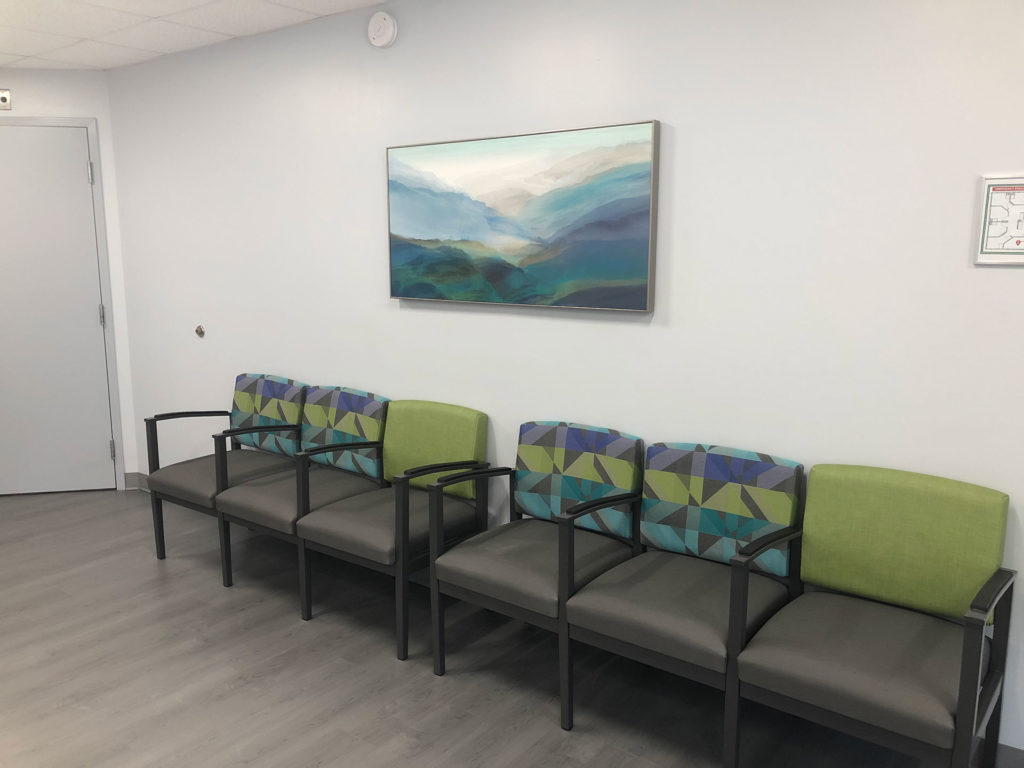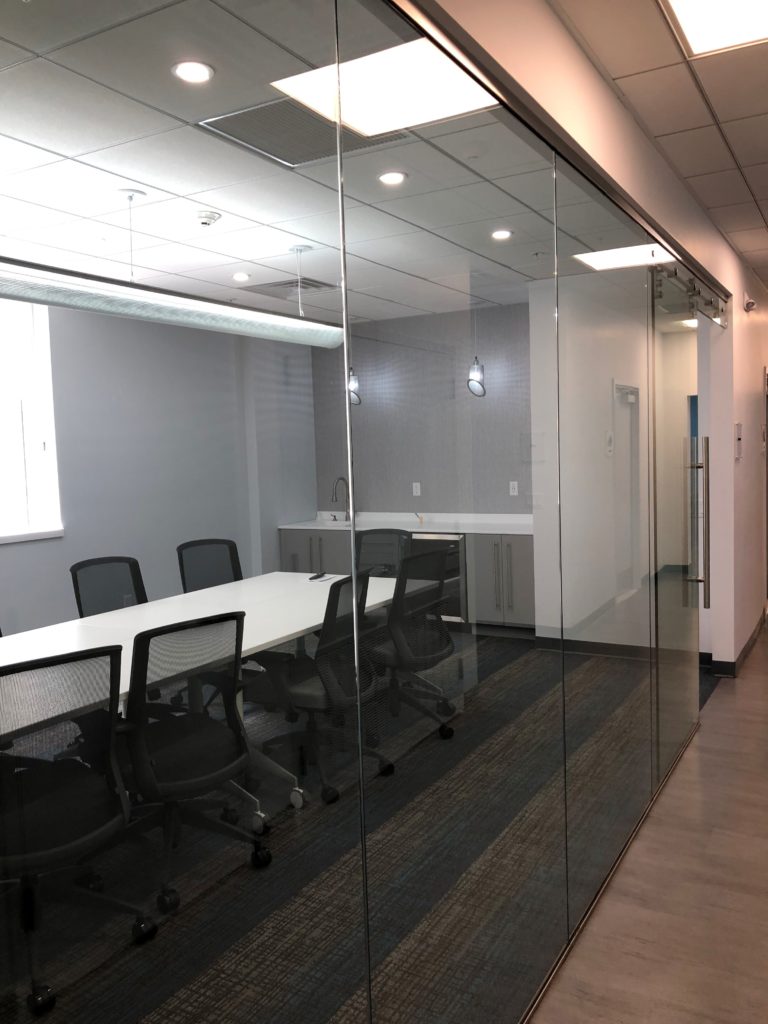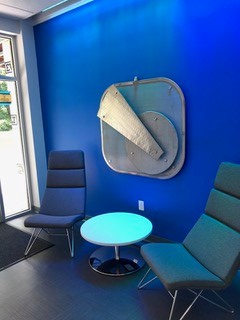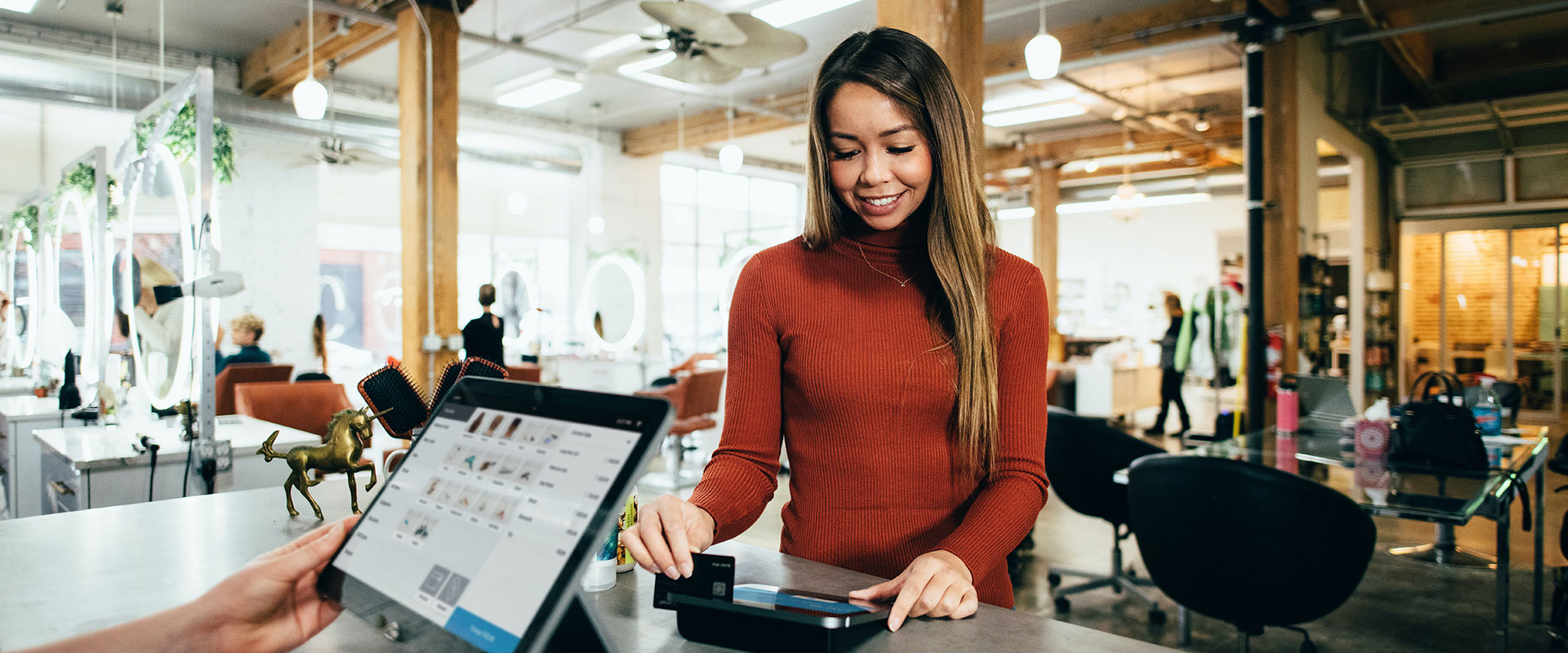You never get a second chance to make a first impression. Such a cliché expression — but the phrase’s continued existence speaks to its truths.
Now imagine an office or medical building. Each space serves many purposes and people. And many times, when building or business owners decide that it’s time to refresh paint colors, change the carpeting, or upgrade the office furniture, that’s all they think about. That one specific focused need.
Even a company that’s moving into a new building might not consider more than matching paint colors to the logo or adding a few more chairs to the lobby. But design is so much more.
Debra Hoffman, President of System Office Products — and CREA United member — says, “Our clients reach out because they want change. They think initially that it’s just a new paint color or replacing a rug that’s worn out. But they don’t always see the big picture of everything that could be done to improve and enhance their space.”





That’s where working with a design team offers many benefits. “We’ll come in and review the spaces objectively, without emotion. I walk around and see how the space presents itself to me. How does it make me feel? Do I feel like the client’s invested in their approach? Is the space clean and inviting? Are there collaborative spaces? Comfortable places for both clients or patients and staff?” Hoffman asks.
Factors of Great Design
Commercial offices and medical offices understand that their workspaces are a tool. Well-designed spaces leverage design elements and function to reflect the company’s culture, brand, and values. Most business owners look at different pieces and parts they want to change — but they don’t consider the whole.
Commercial and medical offices might recognize that their spaces need improvement but struggle to articulate where or how, exactly, to make those improvements. Let’s face it — a medical professional or commercial office manager isn’t necessarily familiar with all the elements that work together to create a great design.
A professional — whether an interior designer, architect, specialist furniture company — looks at the whole space. These experts conduct in-depth analyses of how each the offices use physical space, an integral part of the interior design process.




Healthcare facilities, for example, might think hanging a few pictures on the walls will suffice in improving the environment. But there’s so much more. No one wants to walk into a sterile, all-white waiting room with plastic chairs and harsh incandescent lights. The office manager might recognize that updating the waiting room furniture is important. Perhaps her staff has requested adjustable sit-stand desks. But why stop there? To create the best experience for patients — and a welcoming, user-friendly environment for the staff — requires more deliberate consideration of multiple design ideas that include:
- Aesthetics: What sets this office apart from others — in a good way?
- Overall theme: Sticking to one design helps to create a serene atmosphere.
- Color use: Color palettes can inspire calm and tranquility, whether in artwork or paint, flooring or furniture. A burst of color in a pediatrician’s office can brighten up the room — and cheer up younger patients. Neutral colors accented with subtle patterns and warm hues add personality.
- Waiting areas: Furniture should be comfortable and easy to clean; artwork, paint, and flooring should enhance the environment and make it feel more inviting.
- Balanced form and function: Furniture placement and room design go a long way for improving patient and staff workflows and accommodating people with disabilities.
- Bringing nature inside: Natural elements (also known as biophilic design) — plants, trees, flowers — go a long way to make people feel more relaxed.
- The right fabrics: Choosing the most appropriate fabrics based on cleanability, weight, and more — and deciding where to use them (on chairs, vertical surfaces, walls, or windows) is important, too, especially in a COVID-19 world.
Asking the Right Questions
To create the optimum space and achieve the best result, the space planning and design consultants have to ask the right questions. Sometimes, the right solution goes well beyond merely replacing flooring.
Professionals are trained to provide an objective view of a room, office, or entire building. They walk the space to see what exists, digging in and asking questions about:
- How each space is used
- What the staff requires for performance, efficiency, and comfort
- What clients, customers, or patients need and expect
- Anticipated growth over five or 10 years
- Whether more collaborative space is needed
- The goal of the space — and the company
- How the space can complement the brand identity
A good designer or furniture vendor doesn’t just address the specific, original need for which the client originally called. That need provides the starting point. An experienced professional talks to clients, guiding them through the process of looking at their spaces from the very granular level to the overall big picture.
Hoffman says, “What I’ve learned over the years is that my clients identify a problem but then it becomes my job to ask questions to explore their needs further.”
Questions that make sense to consider — especially for different types of offices, like medical offices, include:
- How many doctors use this space?
- How many people move through these spaces each day?
- How do the different staff members use each space?
- What does the patient workflow look like?
For example, one medical supply company wanted to replace its worn carpet. After the walk-through and meeting with Hoffman, she learned that the company had planned to build out to an existing space but didn’t know how to kick off the project. “We worked with them to create full space plans, adding their new medical supply space complete with all the interior finishes and furniture they needed — plus their new carpeting.”
An Expanded Project Scope
Another client needed a patient workflow design for its new space. This medical practice had purchased a new building already set up to accommodate a medical office. But during the initial planning stages, the team learned that the company had never branded its practice, had zero furniture to move from the old space, didn’t have private offices for the doctors, and lacked enough waiting room space to accommodate the typical patient load.
The original project grew in scope as the client worked with a team of management and design consultants who also collaborate with service professionals that included:
- Construction
- Interior design
- Custom commercial furniture installation
- Healthcare office furniture installation
- Flooring installation specialists
- Wall covering installers
- Window products installers
In addition to an effective, efficient patient workflow plan, the medical practice made enhancements to its space. Several walls were removed to create larger waiting areas, and the interior space included new paints, wall coverings, flooring, signage, and furniture that reflected the company’s new identity. The client was thrilled with the outcome.
No Such Thing as Too Much Planning
When it’s time for a space upgrade, finding the right partner who listens to your goals, collaborates with you to design a plan, and coordinates with multiple people to deliver a finished product is a big deal. Creating a plan also makes it much easier to manage a budget for larger projects.
For some companies, the upgrade from an original project that might include new paint and carpeting, or different office furniture can create a financial strain. In those instances, Hoffman recommends a tiered solution. “If you identify 10 things you’d like to do, develop a phased plan. In phase one, tackle your first two or three objectives. The next year, move to phase two and its objectives and then move to the third stage. This approach allows a business to continue operating and manage its budget. People need to keep working; patients still need to see their doctors. But the office can gradually improve its overall look and feel, increase and improve its functional spaces for patients and staff, and make other changes.”
The look and feel of commercial office and medical office space faced an abrupt retooling with the advent of the COVID-19 pandemic. But now, Hoffman says, clients are beginning to move ahead by eight months or more in their thinking. The COVID pandemic will still influence the look and function of spaces, but the factors guiding good office design won’t change. The members of CREA United are well-equipped to help companies navigate design and rebranding challenges. By its very nature, the organization fosters the collaboration of professionals with complementary expertise in different areas of commercial real estate. Deb Hoffman, of System Office Products Inc. and Gary Baron, President of The Sign Center are just two CREA United’s members who — along with other members of the Medical & Healthcare Real Estate Group and Office Real Estate Group — offer a genuine team approach to designing aesthetically pleasing, efficient, and well-balanced spaces.

